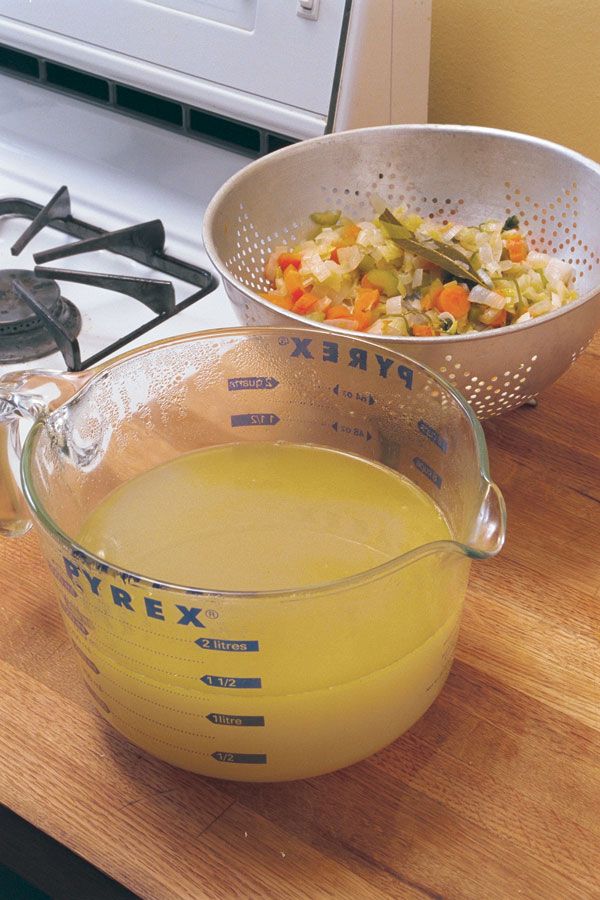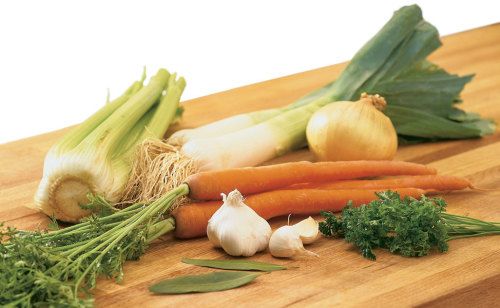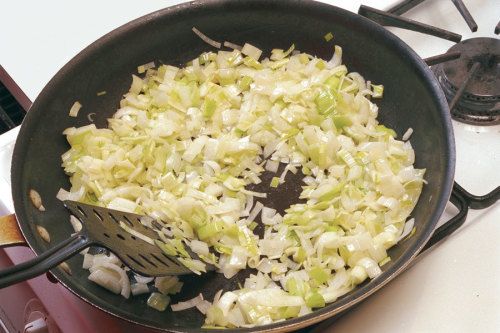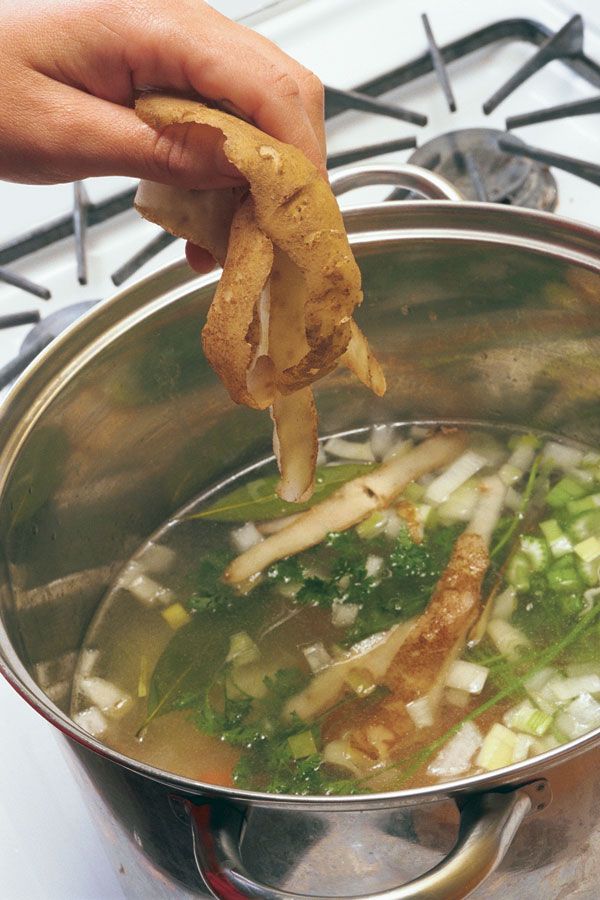
by Ken Haedrich
October 1997
from issue #11
When it comes to meatless soups, vegetarians face a culinary conundrum of long standing. It’s known as, well, The Long-Standing Vegetarian Soup Conundrum: How to make deep-flavored soup stock without benefit of beast or fowl. If you’re serious about vegetarian fare, good stocks are a necessity. Without them, meatless soups are often drab. Risotto, lackluster. Stews, uninspired.
Commercial bouillon cubes will do in a pinch. But for anyone with veggies aplenty, better to pursue homemade options. Why? Flavor. Homemade tastes far better than cubes, powders, or canned broth. They’re full-bodied and they’re good for you. And they can be tweaked to add appropriate layers of flavor. Corn cobs, for instance, will enhance any stock that’s destined for a corn or potato chowder. Just slip a couple of scraped ears into the pot.
While the literature of stock making is rife with theory and opinion, most cooks agree on a basic foundation of flavor-enriching vegetables and herbs for almost any stock, vegetarian or otherwise. They are onions or leeks or both, garlic, celery, carrots, parsley, and bay leaves.
The consensus, however, ends with the question of whether or not the vegetables require a preliminary sweating in oil or butter. Some say no; just throw everything into a pot of water and bring to a boil. The other camp-to which I belong-says sweat you should.
I’ve found that gently sautéing onions and leeks in a little butter or oil brings out their natural sweetness, which makes the stock more interesting and flavorful. The object is to soften the vegetables slowly over relatively low heat, so they release their moisture gradually. Avoid browning, which will make the stock dark and give it a pronounced caramelized flavor. That might work if you’re making a French onion soup or a hearty winter squash bisque, but it would overpower a delicately flavored soup.
So, begin with an average onion and a couple of medium-size leeks. Cut the leeks where the green turns to pale, then slice off the roots. Halve lengthwise, almost all the way to the root end, then fan the leek and thoroughly rinse it under cold running water to wash out any dirt; chop coarsely. Peel the onion-onion skins give stock an off taste-and chop.
Heat 1 1⁄2 tablespoons of oil or butter in a heavy-bottomed soup pot. Stir in the leeks and onion and sauté over gentle heat, stirring occasionally, for about 10 minutes. Stir in three or four bruised cloves of garlic and sauté another minute or so. If you’re using butter, be careful not to burn it and taint the broth.
Add 10 cups of cold water to the sautéed mixture. Stir in two stalks of celery and two large carrots, both chopped; a generous handful of parsley, stems and all; and two bay leaves. These and all other ingredients you use in your stocks should be carefully scrubbed. (When someone describes your soups as earthy, one would hope they aren’t being too literal.) Some vegetables, like carrots and parsnips, have fine wrinkles where the dirt is practically ingrown; they should be peeled before they’re added to the pot.
Speaking of peels, no stock in my book would be complete without the addition of potato peels-or just plain potatoes, peels and all. Some stock pundits hold that only the peels are suitable, on the grounds that whole potato chunks will break down, release their starch, and make the stock somewhat cloudy. All of which is true. On the other hand, how often does it really matter? I could, perhaps, think of one or two times when a potato-clouded broth might be a cause for concern (like when I have Julia over for dinner). But I can think of many more when the extra flavor and body would be perfectly wonderful. Try it both ways and see which you prefer.
Other ingredients can also be added to stock as it starts to simmer. Summer squashes have subdued flavor, but they’re welcome in summer stocks when squash is taking over the garden. Use the stringy seeds of winter squashes and not the flesh, which falls apart and dominates the broth.
Ripe, peak-of-summer tomatoes add color, flavor, and acidity. Eggplant adds body and distinctive flavor to the broth. Add cubes of it just before the garlic and sauté covered 3 to 4 minutes, before adding water.
Be careful with fennel, which tends to dominate. Use the stalk and outer leaves in fennel soup or some seafood stews.
Stay away from cabbage, cauliflower, and Brussels sprouts, as they give an off-flavor and aroma. As for herbs, fresh are best, but as with everything that goes into stock, no one flavor should dominate. It’s hard to use too much parsley. A little chervil, oregano, thyme, and basil are all excellent. Dried herbs can also be used, though in moderation.
Simmer stock uncovered, about 45 minutes; it should reduce quite a bit-by half isn’t too much. I salt as I go, so I can tell how the stock is maturing, but I always under-salt and adjust the seasoning at the end. Strain, cool, and refrigerate. The stock will keep for two days in the fridge or several months in the freezer.
Fine Gardening Recommended Products

A.M. Leonard Deluxe Soil Knife & Leather Sheath Combo
Fine Gardening receives a commission for items purchased through links on this site, including Amazon Associates and other affiliate advertising programs.






















Comments
Log in or create an account to post a comment.
Sign up Log in